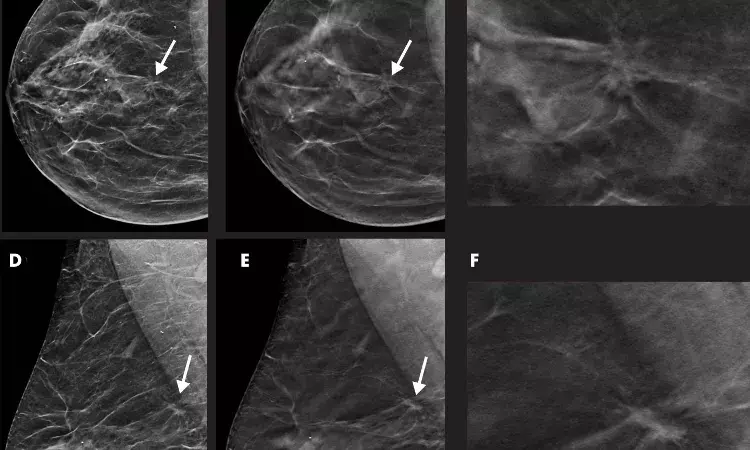- Home
- Medical news & Guidelines
- Anesthesiology
- Cardiology and CTVS
- Critical Care
- Dentistry
- Dermatology
- Diabetes and Endocrinology
- ENT
- Gastroenterology
- Medicine
- Nephrology
- Neurology
- Obstretics-Gynaecology
- Oncology
- Ophthalmology
- Orthopaedics
- Pediatrics-Neonatology
- Psychiatry
- Pulmonology
- Radiology
- Surgery
- Urology
- Laboratory Medicine
- Diet
- Nursing
- Paramedical
- Physiotherapy
- Health news
- Fact Check
- Bone Health Fact Check
- Brain Health Fact Check
- Cancer Related Fact Check
- Child Care Fact Check
- Dental and oral health fact check
- Diabetes and metabolic health fact check
- Diet and Nutrition Fact Check
- Eye and ENT Care Fact Check
- Fitness fact check
- Gut health fact check
- Heart health fact check
- Kidney health fact check
- Medical education fact check
- Men's health fact check
- Respiratory fact check
- Skin and hair care fact check
- Vaccine and Immunization fact check
- Women's health fact check
- AYUSH
- State News
- Andaman and Nicobar Islands
- Andhra Pradesh
- Arunachal Pradesh
- Assam
- Bihar
- Chandigarh
- Chattisgarh
- Dadra and Nagar Haveli
- Daman and Diu
- Delhi
- Goa
- Gujarat
- Haryana
- Himachal Pradesh
- Jammu & Kashmir
- Jharkhand
- Karnataka
- Kerala
- Ladakh
- Lakshadweep
- Madhya Pradesh
- Maharashtra
- Manipur
- Meghalaya
- Mizoram
- Nagaland
- Odisha
- Puducherry
- Punjab
- Rajasthan
- Sikkim
- Tamil Nadu
- Telangana
- Tripura
- Uttar Pradesh
- Uttrakhand
- West Bengal
- Medical Education
- Industry
Mammographic breast density can predict risk of lymphedema: JAMA

Images in a 55-year-old woman with a spiculated mass localized in the upper central quadrant (arrow in A, B, D, and E) of right breast detected with digital breast tomosynthesis (DBT) plus synthetic mammography (SM). Breast density was classified as category C with the Breast Imaging Reporting and Data System. Mass was invasive ductal carcinoma, stage I, and was estrogen and progesterone receptor positive and human epidermal growth factor receptor 2 negative. A, Image from SM in craniocaudal view. B, Single-slice DBT image in craniocaudal view. C, Magnification of the lesion depicted in B. D, Image from SM in mediolateral oblique view. E, Single-slice DBT image in mediolateral oblique view. F, Magnification of the lesion depicted in E.
CREDIT
Radiological Society of North America
Ontario, Canada: Mammographic breast density can be used to predict lymphedema risk and provide volumetric estimates for lymphedema severity., suggests a recent study in the journal JAMA Network Open. According to the study, patients with low breast density were at higher risk of severe lymphedema.
About 20% of breast cancer patients who undergo axillary lymph node dissection will develop lymphedema. There is a need for robust risk models, to approximately monitor and triage these patients for timely diagnosis and treatment. Considering this, Jennifer Yin Yee Kwan, University of Toronto, Toronto, Ontario, Canada, and colleagues evaluated the prognostic value of mammographic breast density in estimating lymphedema severity.
For the purpose, the researchers collected data from July 16, 2018, to March 3, 2020 from the health records of patients of the Cancer Rehabilitation and Survivorship Program at the Princess Margaret Cancer Centre in Toronto, Ontario, Canada. Participants consisted of women (n=373) who had completed curative treatment for a first diagnosis of breast cancer and who were referred to the program. It also included a sample of patients in the general breast oncology population who were receiving follow-up care at the center during the same period but who were not referred to the program. A sample of of patients in the general breast oncology population who were receiving follow-up care at the center during the same period but who were not referred to the program were also included.
All patients attended follow-up appointments at the Princess Margaret Cancer Centre from January 1, 2016, to May 1, 2018. The cohort was randomly split 2:1 to group patients into a training cohort and a validation cohort.
Spearman correlation coefficient between measured and predicted volume of lymphedema was calculated. Area under the curve (AUC) values were generated for predicting the occurrence of at least mild lymphedema (volume, >200 mL) and severe lymphedema (volume, >500 mL) at the time of initial lymphedema diagnosis.
Key findings of the study include:
- Multivariate linear regression identified 3 patient factors (age, BMI, and mammographic breast density), 1 cancer factor (number of pathological lymph nodes), and 1 treatment factor (axillary lymph node dissection) as independent prognostic variables.
- In validation testing, Spearman correlation revealed a statistically significant moderate correlation (coefficient, 0.42) between measured volume and predicted volume of lymphedema.
- The AUC values were 0.72 for predicting the occurrence of mild lymphedema and 0.83 for severe lymphedema.
"The findings of this study suggest that mammographic breast density can be used as a prognostic factor for lymphedema risk and provide volumetric estimates for lymphedema severity," concluded the authors.
The study, "Development and Validation of a Risk Model for Breast Cancer–Related Lymphedema," is published in the journal JAMA Network Open.
DOI: https://jamanetwork.com/journals/jamanetworkopen/fullarticle/2772800
Dr Kamal Kant Kohli-MBBS, DTCD- a chest specialist with more than 30 years of practice and a flair for writing clinical articles, Dr Kamal Kant Kohli joined Medical Dialogues as a Chief Editor of Medical News. Besides writing articles, as an editor, he proofreads and verifies all the medical content published on Medical Dialogues including those coming from journals, studies,medical conferences,guidelines etc. Email: drkohli@medicaldialogues.in. Contact no. 011-43720751


